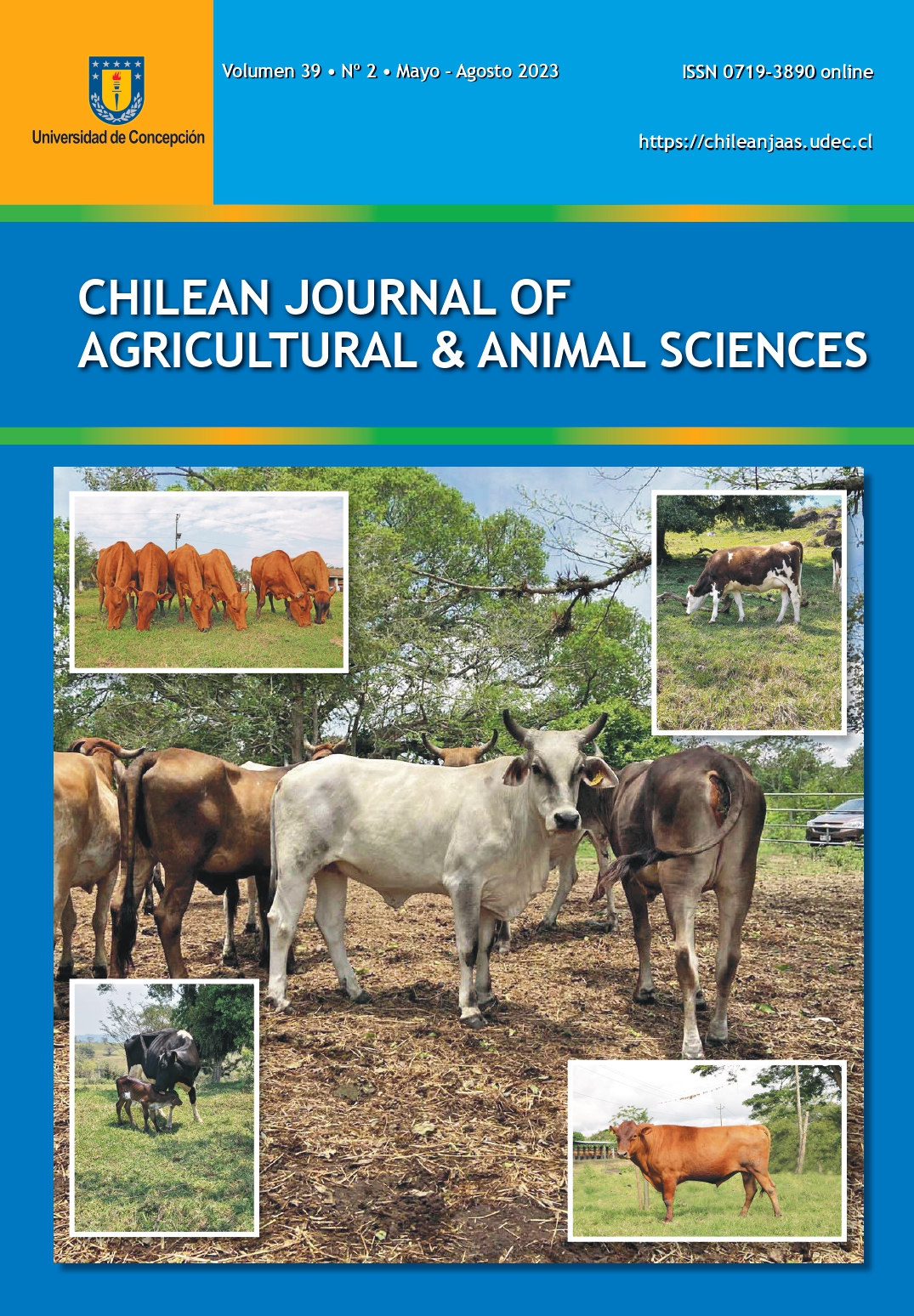EFFECT OF BREEDING PROGRAMS ON THE FUNCTIONAL LONGEVITY OF IRANIAN HOLSTEIN COWS
DOI:
https://doi.org/10.29393/CHJAA39-12EBFH60012Palabras clave:
Culling risk, Dairy cattle, Functional longevity, Holstein gen percentageResumen
This study aimed to determine the effect of breeding programs on the functional longevity of Iranian Holstein cows. For this purpose, records of 538,873 animals collected by the Animal Breeding Center of Iran from 1990 to 2013 were used. Functional longevity was calculated from the difference between the first calving date and the last recording date. Animals that were alive in the herd or their culling date was unavailable, and less than one year had passed from their last recording were considered censored data, accounting for 34.23% of the records. The effect of milk production, herd size, interaction between lactation period and stage, herd-year-season of calving, Holstein gene percentage, and age at first calving were evaluated, and significant effects were included in the maternal grandsire model on genetic evaluation of longevity. The survival probability in different levels of effects was calculated by cmprsk package, and genetic evaluation of longevity was performed using Survival kit software. All effects were significant on the functional longevity, and thus the culling risk had a decreasing trend with increasing herd size changes and age at first calving, which increases with the increment of Holstein gene percentage. The culling risk decreased with increasing lactation, and animals were more likely to be culled in the first lactation. Direct heritability of longevity was estimated at 0.15, indicating good genetic diversity for breeding this
trait. The effect of breeding programs with estimated breeding values for milk, fat, and protein production showed that the culling risk for higher genetic production potential tended to increase.
Descargas
Publicado
Cómo citar
Número
Sección

Esta obra está bajo una licencia internacional Creative Commons Atribución 4.0.







